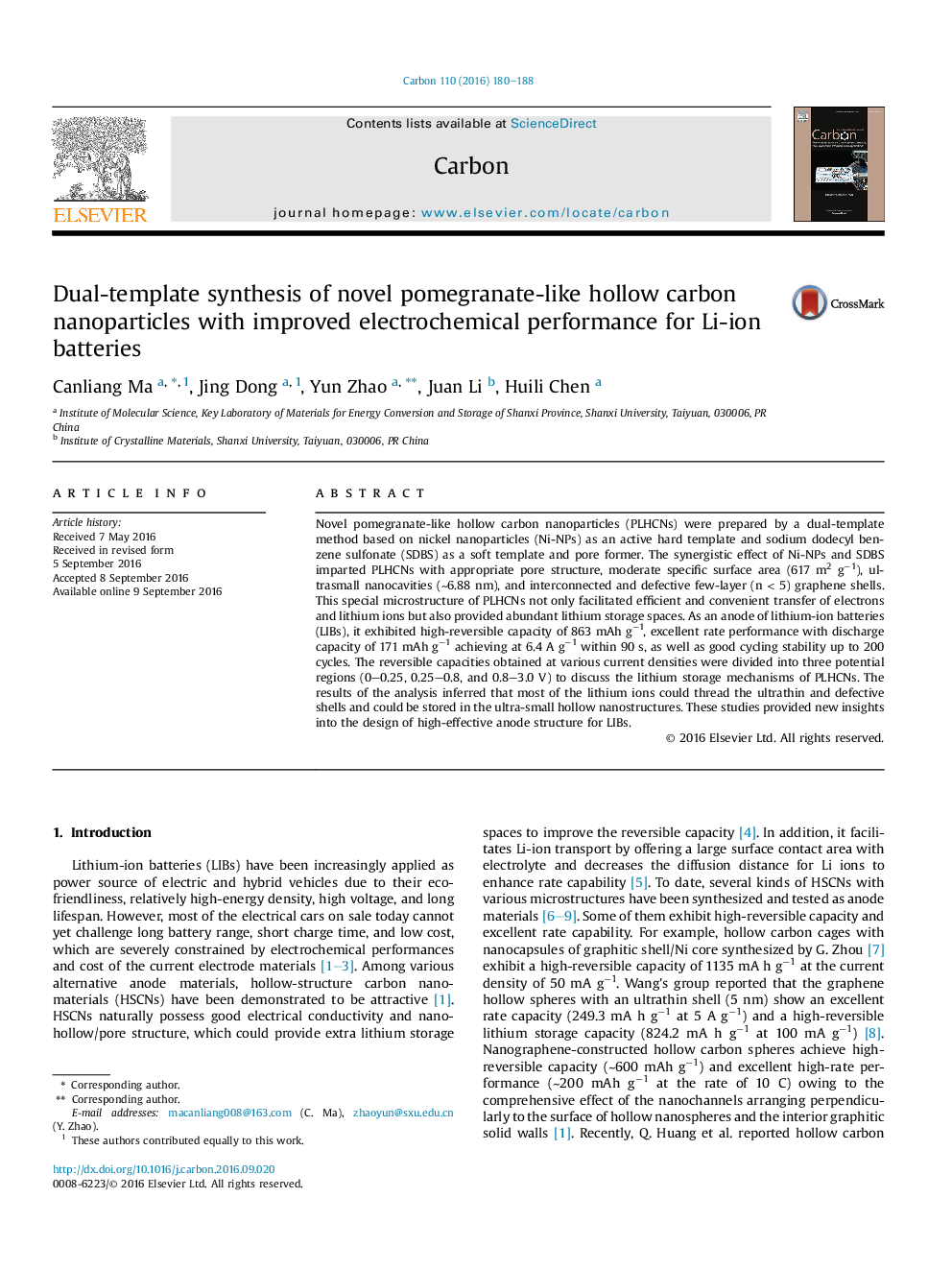| کد مقاله | کد نشریه | سال انتشار | مقاله انگلیسی | نسخه تمام متن |
|---|---|---|---|---|
| 5432708 | 1508837 | 2016 | 9 صفحه PDF | دانلود رایگان |
Novel pomegranate-like hollow carbon nanoparticles (PLHCNs) were prepared by a dual-template method based on nickel nanoparticles (Ni-NPs) as an active hard template and sodium dodecyl benzene sulfonate (SDBS) as a soft template and pore former. The synergistic effect of Ni-NPs and SDBS imparted PLHCNs with appropriate pore structure, moderate specific surface area (617 m2 gâ1), ultrasmall nanocavities (â¼6.88 nm), and interconnected and defective few-layer (n < 5) graphene shells. This special microstructure of PLHCNs not only facilitated efficient and convenient transfer of electrons and lithium ions but also provided abundant lithium storage spaces. As an anode of lithium-ion batteries (LIBs), it exhibited high-reversible capacity of 863 mAh gâ1, excellent rate performance with discharge capacity of 171 mAh gâ1 achieving at 6.4 A gâ1 within 90 s, as well as good cycling stability up to 200 cycles. The reversible capacities obtained at various current densities were divided into three potential regions (0-0.25, 0.25-0.8, and 0.8-3.0 V) to discuss the lithium storage mechanisms of PLHCNs. The results of the analysis inferred that most of the lithium ions could thread the ultrathin and defective shells and could be stored in the ultra-small hollow nanostructures. These studies provided new insights into the design of high-effective anode structure for LIBs.
Journal: Carbon - Volume 110, December 2016, Pages 180-188
